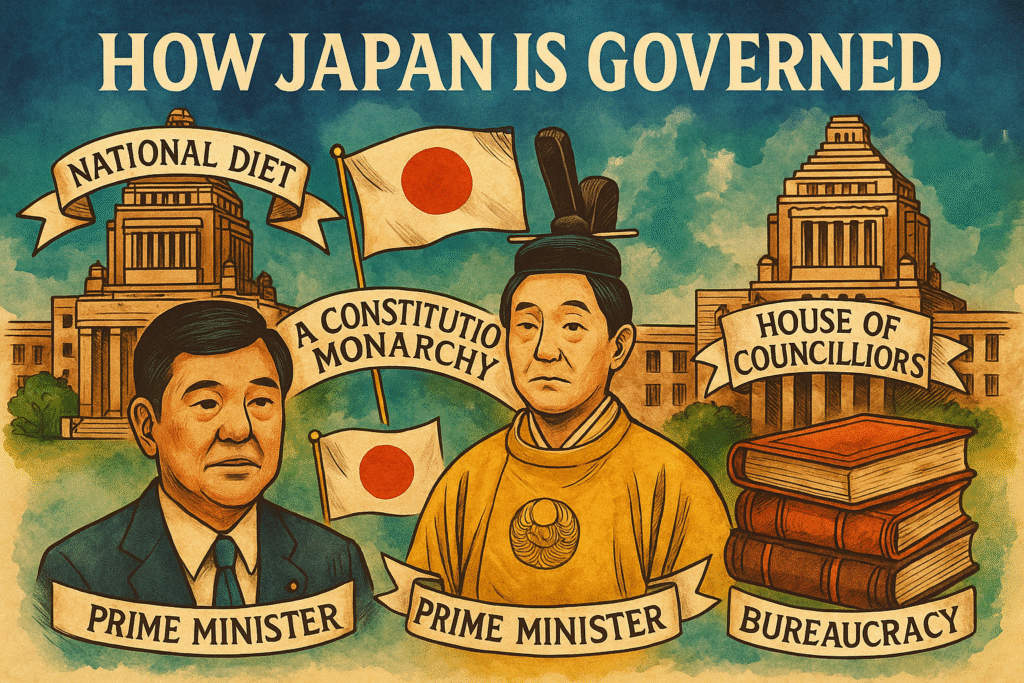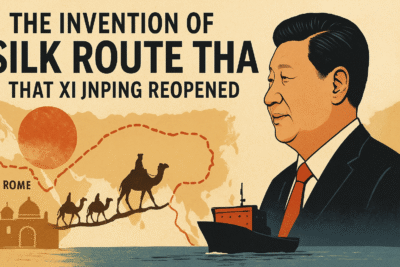
Japan’s political system is a careful blend of ancient monarchy and modern democracy. This distinct combination affects not only how the country is governed but also how the nation’s Parliament, main political parties, and the people interact.
Japan is voting in its Senate election today. This election makes Japan’s political governance system a good topic for coming civil services examinations. If you’re preparing for competitive exams or simply want to understand current affairs, knowing these fundamentals is essential.
The constitutional monarchy and the role of the emperor
Japan’s imperial line is the oldest in the world. However, today’s emperor is a symbolic head of state—he has no influence over government policy or law. As defined by the 1947 Constitution, the emperor’s duties are ceremonial.
These include opening Parliament, formally appointing the prime minister chosen by lawmakers, signing laws, and receiving visiting dignitaries, all strictly under government advice. Sovereignty, by law, resides with the people, not the throne.
The structure of government: Executive, legislative, and judiciary
Japan is a parliamentary democracy with three independent branches:
- Executive: The prime minister leads the government and cabinet. The prime minister is elected by the Parliament and then formally appointed by the emperor.
- Legislative: Parliament is called the National Diet and consists of two elected houses:
- House of Representatives (Shūgiin): 465 members; most powerful; passes budgets, ratifies treaties, controls the government, and can override upper house decisions.
- House of Councillors (Sangiin): 248 members; reviews, amends, or delays legislation; half the seats are up for election every three years.
- Judiciary: The Supreme Court and other courts ensure laws and government actions follow the constitution.
Main political parties and the dynamics of power
Japan has a lively multi-party system. The Liberal Democratic Party (LDP) has mostly led since the 1950s, often forming coalitions (currently with Komeito). Rival parties, such as the Constitutional Democratic Party (CDP), Japan Innovation Party (Ishin), and others, are increasingly active, reflecting diverse public views. Here are the main parties:
| Party | Leader | Ideology | House of Reps | House of Councillors |
|---|---|---|---|---|
| Liberal Democratic Party (LDP) | Shigeru Ishiba | Conservatism, nationalism | 191 | 115 |
| Komeito | Tetsuo Saito | Social conservatism, Buddhism | 24 | 27 |
| Constitutional Democratic Party (CDP) | Yoshihiko Noda | Liberalism, social liberalism | 148 | 38 |
| Japan Innovation Party (Ishin) | Hirofumi Yoshimura, Seiji Maehara | Right-wing populism | 38 | 20 |
| Democratic Party for the People (DPP) | Yuichiro Tamaki | Conservatism | 28 | 10 |
| Japanese Communist Party (JCP) | Tomoko Tamura | Progressivism, communism | 8 | 11 |
| Reiwa Shinsengumi | Tarō Yamamoto | Left-wing populism | 9 | 5 |
| Sanseitō | Sohei Kamiya | Ultranationalism | 3 | 1 |
| Social Democratic Party (SDP) | Mizuho Fukushima | Social democracy, progressivism | 1 | 2 |
The electoral process
Members of the House of Representatives are elected for terms of up to four years (though elections are often called earlier), using a mix of single-member districts and proportional representation. House of Councillors members serve six-year terms, with half the chamber elected every three years through both constituency and nationwide proportional systems.
Local (subnational) elections select governors, councillors, mayors, and local assemblies. Every Japanese citizen aged 18 or older can vote, and voting is secret—an important constitutional guarantee.
The relationship between monarchy and democracy
Japan’s emperor does not make policy. His influence is symbolic, helping unite the nation during ceremonies, crises, and celebrations. The real work of governing—making and enforcing laws—rests with elected officials, under the principles of democracy and the rule of law.
Features unique to Japanese politics
- Coalition governments are common; single-party rule is rare today.
- The bureaucracy, or civil service, has considerable impact on policy drafting and execution.
- Sometimes, parties opposing the government control one chamber of Parliament (“twisted Diets”), leading to negotiation and compromise.
How it all works together: A modern system rooted in tradition
Japan’s political system is a living example of how tradition and modernity can coexist. The emperor symbolises cultural heritage; Parliament and the courts ensure accountability and adaptability. Political parties, regular elections, and open public debate mean that governance is both stable and responsive to change.



